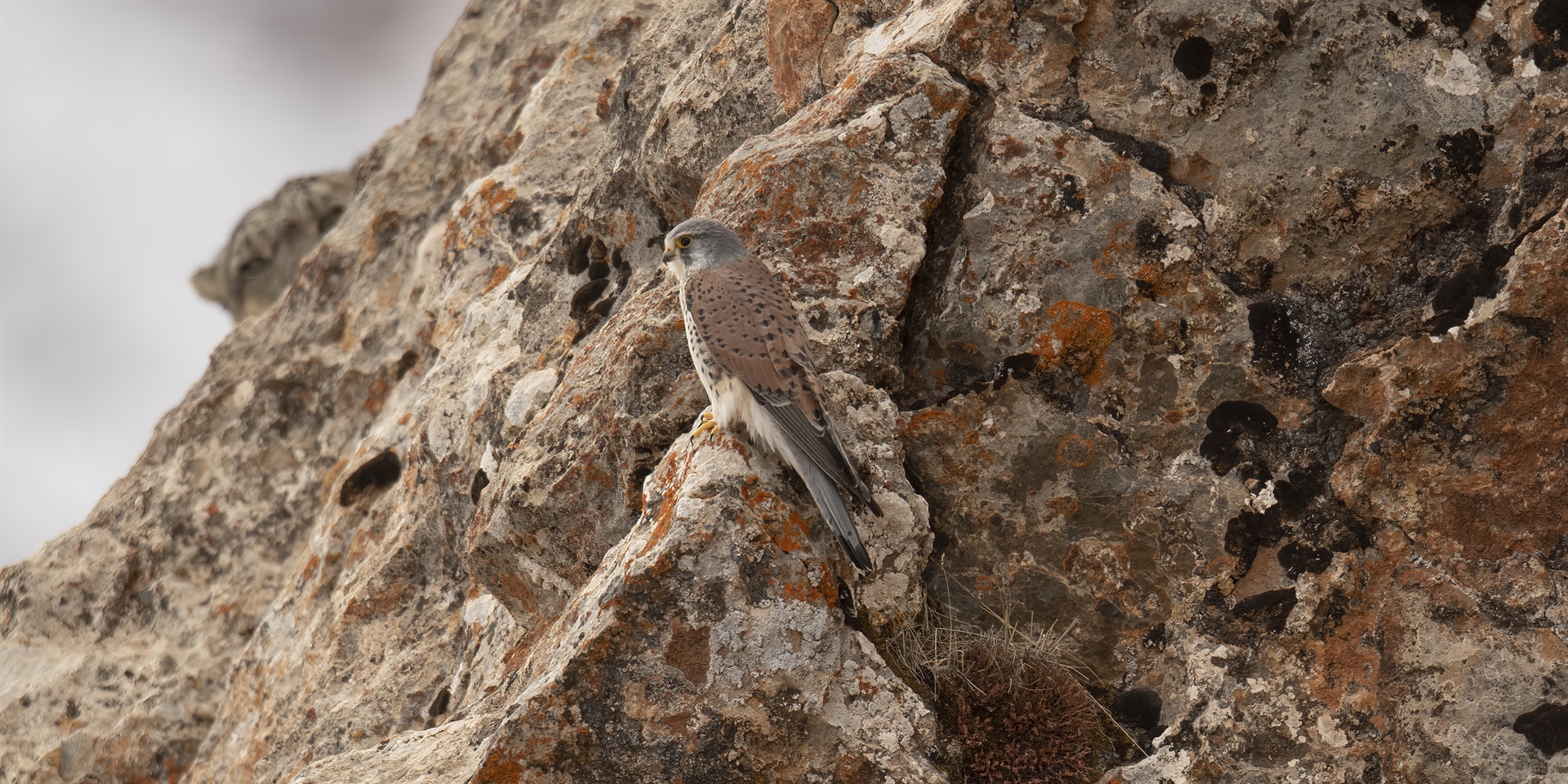
In 2015, Vincent Mignet, one of the world’s leading wildlife photographers, was at his “post” during the annual meeting with representatives of the fauna of the Tibetan Plateau. There, at an altitude of 5000 meters, you can see the rarest sight – the famous snow leopard, an almost mythical animal that is on the verge of extinction. After several weeks of observation without any sign of the beast, Minye was forced to return, admitting that his search had been fruitless. At least he thought so. Two months later, when he began to carefully review the footage, he saw something amazing. There, at the edge of a photo of a brown hawk against a similar rock, the top of a leopard’s head was visible from behind, perfectly camouflaged as another rock outcropping.
“This photograph has hidden its lessons. In nature, we are the object of observation. On the other hand, our eyes are always drawn to the simplest, confirming what we already know,” writes French writer and naturalist Sylvain Tesson in his book Snow Leopard. published in Greek by Agra. A year later, he returned with Minye and two other companions to the deserts of Tibet in search of a rare feline. His wonderful book is a recording of this mission, along with an accompanying documentary of the same name, which is released next Thursday in cinemas.
The highest virtue, according to observant veteran Mignet, is patience. One that allows you to wait eight, ten, twelve hours at the same place to see something unique. The very one that allows herbivores to graze endlessly, predators to keep it for days, nature itself to form its plains and mountains over millions of years. In the film, we watch a small team move from point to point, with cameras, special binoculars and backpacks on their shoulders, placing carts on icy slopes in temperatures of 20 and 30 degrees below zero to witness a miracle.
As Tesson clearly points out in the book, “The snow leopard makes love in pale white landscapes. In February, she goes into heat. She lives inside the crystals, dressed in furs. Males fight, females offer, couples call to each other. Mignet foresaw everything: if we want to have at least some chance of seeing her, we must look for her in the middle of winter, at an altitude of four to five thousand meters.
In nature, we are the object of observation – On the other hand, our eyes always move towards the simpler, confirming what we already know,” writes Sylvain Tesson.
But it’s not just the leopard. In their difficult journey, travelers see many other things through binoculars or with the naked eye: fast Siru antelopes with swords on their heads, wolves that “sing” at night, motionless wild donkeys, shy wild cats and, of course, majestic yaks, like living battleships, rushing and disappearing into the dust. It’s all on screen, flawlessly shot and (sometimes) accompanied by evocative melodies created by Nick Cave and Warren Ellis.

Philosophical dimension
However, the most important thing here is that we are dealing not only with a documentary, but even more so with a book about the worship of nature and information. On the contrary, the philosophical dimension is no less important. “The leopard slept soundly, nothing threatened him. A horse neighs at the slightest gesture, a cat puts it on its feet at the slightest noise, a dog smells someone else and immediately flies, an insect rushes into its nest, a herbivore trembles behind its back, and a person never forgets to check the corners when entering a room. Paranoia is one of the states of life. But the leopard was sure of his dominance […] embodied this mysterious concept of the “royal body”. A real ruler is content with existence. He is free from all action and avoids appearance. His authority derives from his very existence. The President of the Republic, for his part, must always be a confidant of a small area, ”Tesson writes.
This first encounter with the beast, also captured in the documentary by Mignet and Marie Amige, is not only the culmination of effort, but also a transformative experience. The gaze of those who saw it tells a story that is almost transcendent, incomprehensible to modern man. “Nervozosis is associated with the refraction of our information-obsessed brain. A prisoner of the city, addicted to the incessant emergence of something new, I felt limited as a person. Amusement parks are full of people, clothes are spinning in the bin, screens are shining. I never wondered: by what criteria is the flight of swans less interesting than Donald Trump’s tweets?
Source: Kathimerini
Ashley Bailey is a talented author and journalist known for her writing on trending topics. Currently working at 247 news reel, she brings readers fresh perspectives on current issues. With her well-researched and thought-provoking articles, she captures the zeitgeist and stays ahead of the latest trends. Ashley’s writing is a must-read for anyone interested in staying up-to-date with the latest developments.